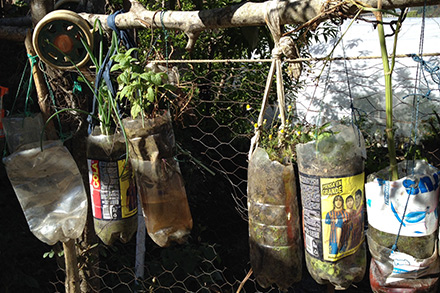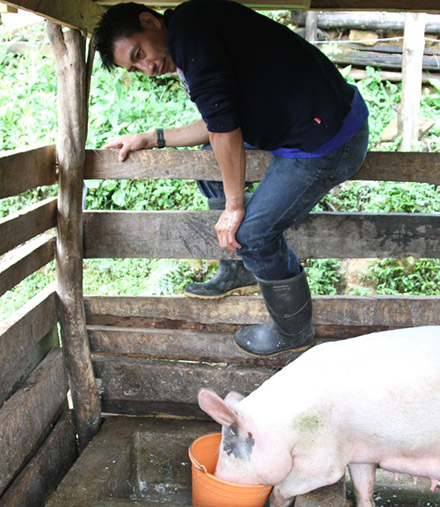By Colleen Popkin, Senior Manager of Sustainability at Keurig Green Mountain
Some economists, on analyzing the size of a typical small coffee farm, might say it is unrealistic to expect two hectares to raise a family out of poverty. The truth is, with market volatility, climate change and lack of support services, the deck often seems stacked against family farmers in many places I visit. The resourcefulness of coffee producers I have met, however, gives me hope for the small farm.

I think about the Nicaraguan producer using old soda bottles to plant herbs on her patio… the Guatemalan farmer who picks up the drinking cups after each training session so he can plant seedlings in his nursery… the women’s group collecting droppings from guinea pigs to add to their organic fertilizer in Peru. These are all examples of inspired and practical ways smallholders are leveraging their resources. These family farmers are intrinsically sustainability-minded so the same parcel will produce into the future for their children and children’s children. What they will pass down may not be a substantial savings account, but the land and the lessons for how to care for it.
So how do we help family farmers tap into their resourceful and sustainability-oriented nature and unlock the potential of their farm? With the help of Heifer, we have worked with farmers in Peru, Honduras, Nicaragua, Guatemala and Mexico to improve livelihoods and to increase resiliency to seasonal hunger, or "the thin months."

Keurig Green Mountain and Heifer International share a commitment to empowering individuals and families, helping coffee growers diversify their incomes and improve their diets, supporting communities to become self-reliant and protecting the environment through sustainable agro-ecological practices.
Our program with Heifer was in place when the latest challenge–Coffee Leaf Rust disease–struck hard in Latin America. This fungus attacks the leaves of a coffee plant and, if not treated quickly, may kill the plant. The epidemic has been exacerbated by climate change, with warmer weather and increased humidity creating conditions that allow the fungus to spread quickly and to move from the lowlands to the highlands where more specialty coffees are grown. The Heifer team was able to quickly mobilize training and tools for farmers dealing with this crisis. One of the farmers involved in our Heifer project in Honduras explained the benefits in this way: “We have made up for the coffee rust with these projects [livestock to raise, and avocados and bananas to grow and sell]. We are thinking about other things; we no longer think only about coffee. Now that we have major problems [with Coffee Leaf Rust], those of us who have these projects are not going to feel the impact so harshly.”
While the challenges of market volatility, climate change,and lack of services will take significant commitment, time and resources to overcome, programs that can tap into farmers’ talents in the near-term can make them more resilient to shocks while on the road to a better future.
About the author: Colleen Popkin manages a portfolio of outreach projects to improve livelihoods of farmers and workers in Keurig’s agricultural supply chains and to promote the long-term supply of quality agricultural inputs.
